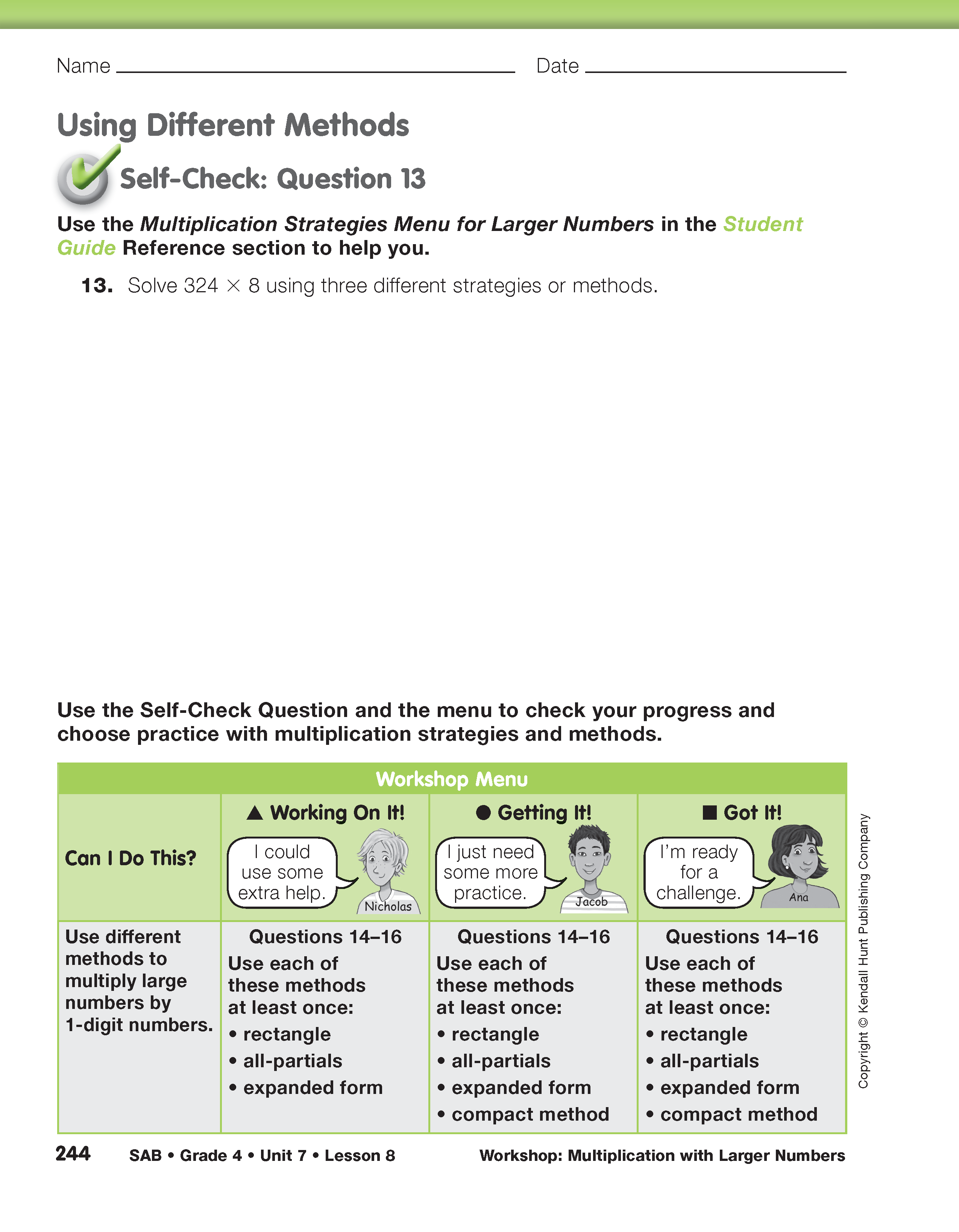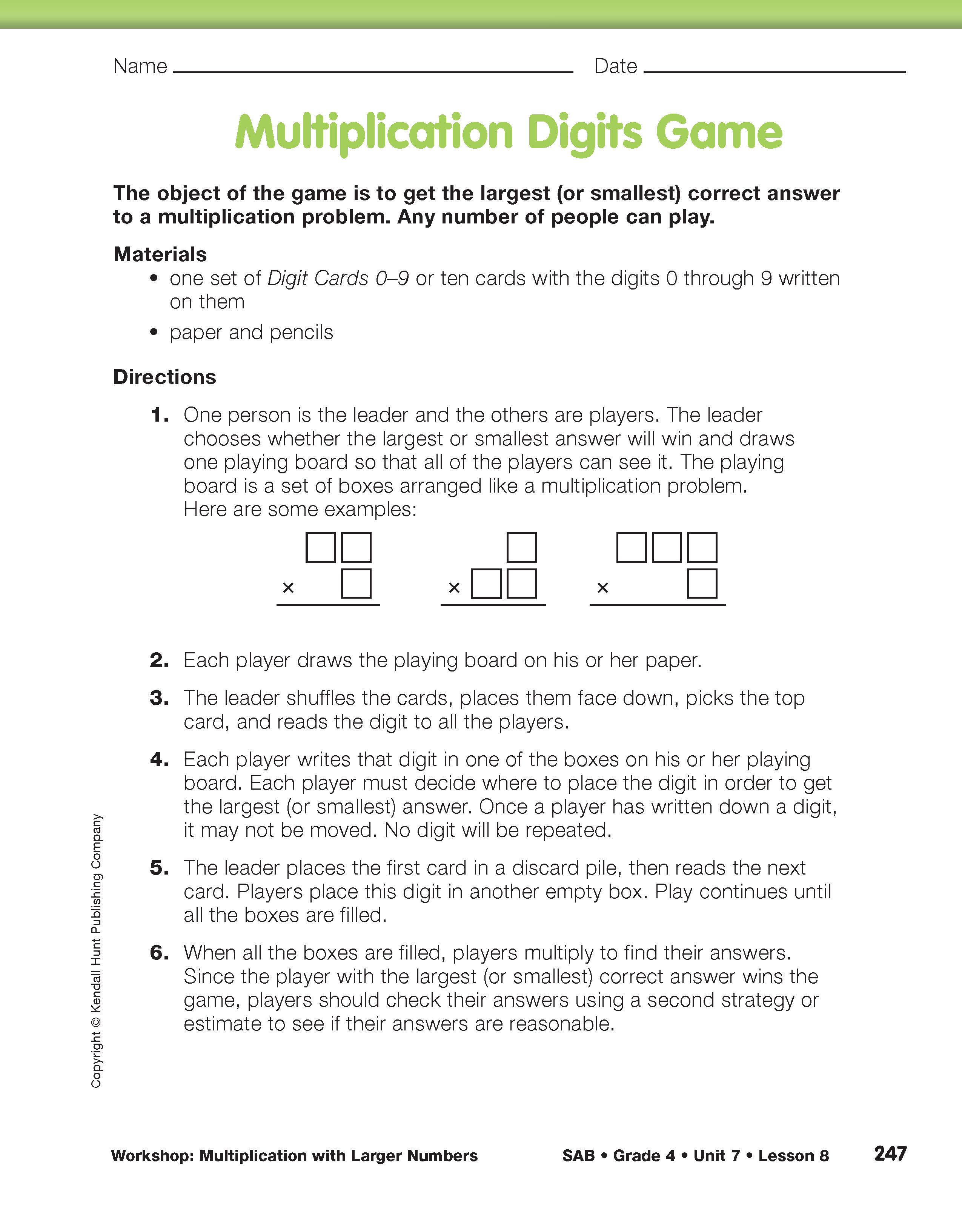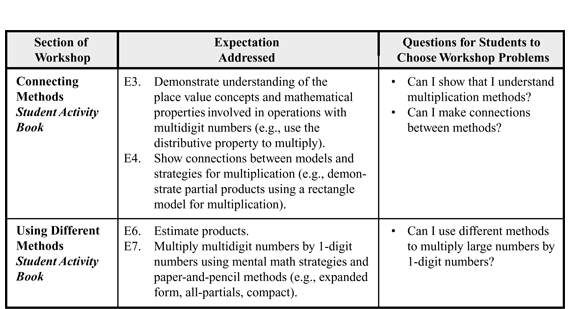Workshop: Multiplication with Larger Numbers
Est. Class Sessions: 2Developing the Lesson
Part 1. Practice Using and Connecting Multiplication Strategies
Demonstrate the Multiplication Digits Game. Use the directions outlined on the Multiplication Digits Game pages in the Student Activity Book to play the game as a class. Draw a playing board on the board as shown in Figure 1 and ask students to copy it. Draw a number from the Digit Cards 0–9 you prepared and ask each student to place the digit in one of the boxes. The goal is to find the largest product. Continue to draw digits, asking students to place the digits one at a time until all the boxes are filled. Students find the product and then check their answers by finding the product a different way. Ask the student who found the largest product in the class to demonstrate the methods he or she used to solve and check the answer.
Tell students that they will get a chance to play this game with a partner later in the lesson, after they finish the tasks of the Workshop.
Set Up the Workshop: Connecting and Using. Review the organization of the Workshop by skimming the Practicing Multiplication Strategies pages in the Student Activity Book. This portion of the workshop is divided into two sections, Connecting Methods and Using Different Methods, that address Expectations as shown in Figure 2. (Minis of the Student Activity Book pages not shown here are in the Answer Key.)
Choose Targeted Practice. Students begin each section by first answering the Self-Check Questions, either individually or with partners. These questions serve two purposes. First, they clearly communicate the content of the related targeted practice to students. Second, they help students quickly self-assess their progress with the Expectations to help them choose which problems to work on in the Workshop.
After students complete the Self-Check Questions in a section, discuss each of the questions with the whole class. Ask students to share their solutions and explain their reasoning. Facilitate a class discussion of students' solutions. Next, have students think about each question in the left-hand column of the menu following the Self-Check Questions. Ask students to review their work on the Self-Check Questions to decide which problems to choose from the following groups:
- Students who are “working on it” and need some extra help should circle the problem set marked with a triangle (
 ). These problems provide scaffolded support for developing the essential underlying concepts as well as some opportunities for practice.
). These problems provide scaffolded support for developing the essential underlying concepts as well as some opportunities for practice. - Students who are “getting it” and just need more practice should circle the problem set marked with a circle (
 ). These problems mainly provide opportunities to practice with some concept reinforcement and some opportunities for extension.
). These problems mainly provide opportunities to practice with some concept reinforcement and some opportunities for extension. - Students who have “got it” and are ready for a challenge or extension should circle problems marked with a square (
 ). These problems provide some practice and then move into opportunities for extension.
). These problems provide some practice and then move into opportunities for extension.
Check students' choices to see how well they match your own assessment of their progress on the related Expectation(s). Help students make selections that will provide the kind of practice they need.
Once students select the questions to complete in a section of the Workshop, match groups of students who have chosen similar sets of problems from the menu. Have students work with their groups to solve the problems they chose. Again, flexibility is important. If problems seem either too easy or difficult for students, they should adjust their choices from the menu.
After the first few groups of students have completed their selected problems (but before all students have completed their problems), introduce the next section to the whole class. Again, have students try the Self-Check Questions, discuss solutions, and choose problems from the menu with your guidance. Follow this pattern through the two sections of the Practicing Multiplication Strategies pages in the Student Activity Book.
Play Multiplication Digits Game with a Partner. As students are completing their Workshop tasks, direct them to play the Multiplication Digits Game with a partner. Directions are in the Student Activity Book.

















